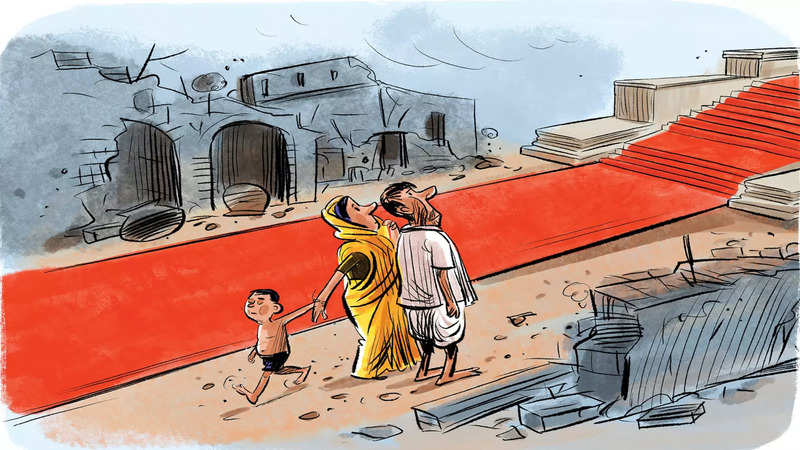UP vote for ‘Deemokrasi’

- Indrajit Roy
- Jun 7, 2024, 20:16 IST IST
* Why temple didn’t work as a force multiplier for BJP * Why class & region were key voting determinants * Why checks & balances on power were a key voter concern
Few things age as badly as hubris. UP, which brought BJP’s juggernaut to a grinding halt, offers a vivid illustration. Faizabad, home of Ayodhya where Modi consecrated Ram’s Temple barely six months ago, rejected BJP. Along with 36 of the state’s 80 constituencies, Faizabad’s residents — and each of its four divisions — chose SP, a party once known for taking a hard line against the Ram Janmabhoomi movement. Faizabad’s residents did join in celebrations of the return of Ram Lalla, but they were not impressed with BJP’s further attempts to politicise the deity.
What happened around the temple: The temple construction affected lives. Almost 5,000 houses and businesses were reportedly asked to vacate land without commensurate compensation. And these were the lucky ones: many could not claim compensation for their ancestral properties dating back centuries, as they did not have appropriate documentation. Some houses were prohibited from having balconies. For months, the city was a construction site. Residents say govt contractors flouted rules to cut corners. The widening of the Ram Path, which leads to the temple, resulted in the demolition of local shops and temples that gave Ayodhya its distinctive identity. Many of those less impacted by the temple construction were indifferent: okay, we got the temple, now what? BJP leadership had little time for UP’s provincial Hindutva. For everyday Hinduism, for many ordinary UP wallahs, 80% of whom are Hindu, the temple wasn’t the key determinant in voting decision.
What happened around the temple: The temple construction affected lives. Almost 5,000 houses and businesses were reportedly asked to vacate land without commensurate compensation. And these were the lucky ones: many could not claim compensation for their ancestral properties dating back centuries, as they did not have appropriate documentation. Some houses were prohibited from having balconies. For months, the city was a construction site. Residents say govt contractors flouted rules to cut corners. The widening of the Ram Path, which leads to the temple, resulted in the demolition of local shops and temples that gave Ayodhya its distinctive identity. Many of those less impacted by the temple construction were indifferent: okay, we got the temple, now what? BJP leadership had little time for UP’s provincial Hindutva. For everyday Hinduism, for many ordinary UP wallahs, 80% of whom are Hindu, the temple wasn’t the key determinant in voting decision.
